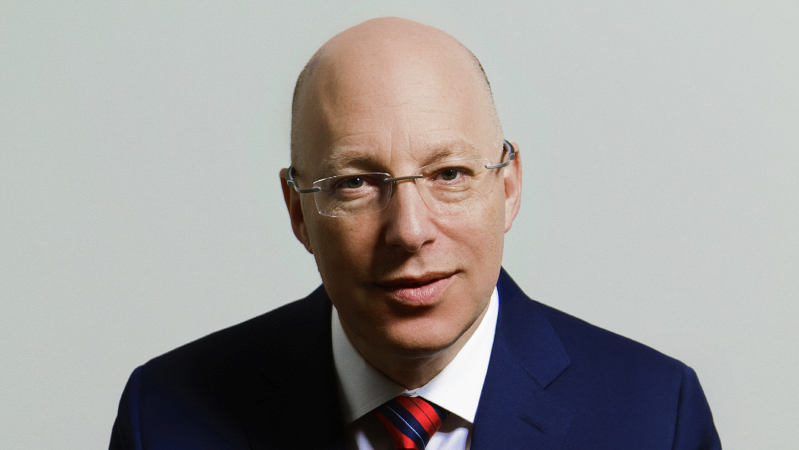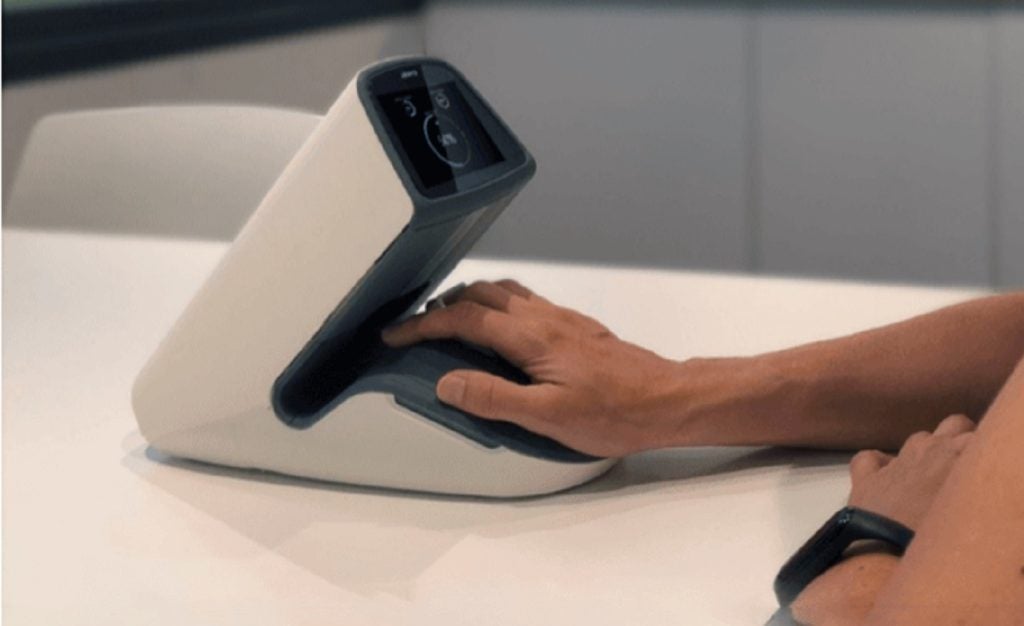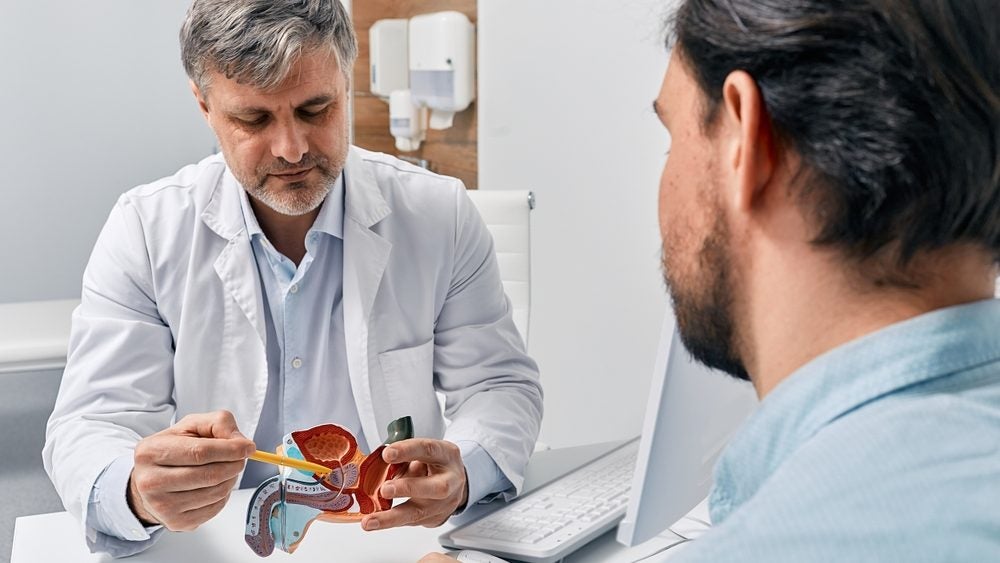
The Covid-19 pandemic has provided a much-needed innovation boost in health systems around the world.
Over the past year, companies have had to act quickly, and sometimes unconventionally, to get products developed and approved at lightning speed, as well as finding creative ways to communicate and collaborate during intense lockdown restrictions.
With social distancing and lockdown measures in place, patients had to rely on the virtual realm and technologies such as telemedicine to meet with medical professionals, while practitioners have turned to virtual and augmented reality platforms to provide lifelike and remote training for colleagues.
Outside of the clinical setting, patients have become more accustomed to using wearables and devices to collect valuable real-world data that can be used to remotely monitor the user or allow the patient to manage their own symptoms at home.
One advocate for keeping this innovative momentum going after we have cleared this pandemic and beyond is Bernard Ross, CEO of UK-based MedTech company Sky Medical Technology.
In this Q&A, we talk to Ross about the unprecedented uptake of technology in response to the Covid-19 crisis and why the healthcare industry must not abandon innovation post-pandemic.
How well do you really know your competitors?
Access the most comprehensive Company Profiles on the market, powered by GlobalData. Save hours of research. Gain competitive edge.

Thank you!
Your download email will arrive shortly
Not ready to buy yet? Download a free sample
We are confident about the unique quality of our Company Profiles. However, we want you to make the most beneficial decision for your business, so we offer a free sample that you can download by submitting the below form
By GlobalData
Kezia Parkins (KP): How has the pandemic lit a fire under innovation in healthcare?
Bernard Ross (BR): I think it’s fair to say that we were caught off guard with the Covid-19 pandemic, both from a government level and a health system level. In the UK, this was really our first rodeo. Our colleagues in the East have been through this kind of thing before, so they behaved in a more learned way.
But once people gathered what needs doing at a clinical level, leadership kind of moved from the bureaucracy within a medical institution into the clinical arena. The clinicians were increasingly empowered through necessity to find solutions in real-time.
They had to rapidly adapt protocols on the fly. Something that normally took a decade to change, they were having to change on a local basis in a week and then share that information in real-time with their colleagues. Innovation was happening on the hoof, and the bureaucrats were getting out of the way – they were letting the clinicians do what was needed.
We need to keep hold of this culture of working together for the common good, thinking about what it is our patients actually need and evaluate our approval systems and why it takes so long to do or change things.
On average it takes 17 years for a new technology or technique to be fully adopted into standard of care, and that’s because every trust and every hospital – and in many respects every doctor – has to make up their own mind on whether this is the right product for their patients. I think with Covid-19 that is beginning to change.
For example, the US Food and Drug Administration (FDA) is being pushed heavily and is starting to approve or provide clearances to new products based upon real-world data, not necessarily relying on randomised controlled trials.
Frequently you get products that perform extraordinarily well in a tightly controlled clinical study, but when the rubber hits the road, and they actually get into the clinic, other things in real life get in the way. If a product is good, but it is difficult to train the nurses on how to use it, that will be a roadblock to adoption.
An area where we have seen huge innovation over the past year is in telehealth health and remote patient monitoring. I must have seen my GP six times over the past year for one reason or another. He hasn’t been to my house, and I haven’t been to his practice.
Also, people are now increasingly looking at ways tech can help reduce the length of stay in hospital and help patients self-manage their illness at home or once they are discharged.
KP: How has the med-tech field adapted because of Covid-19?
BR: It’s not just Covid-19 that is changing the landscape for medical devices. You’ve got Brexit, and the EU’s Medical Device Regulation coming in as well. The Regulation could be very helpful as it will elevate the kind of data required for medical devices to something more akin to pharmaceuticals.
Whilst its additional workload for medical device companies It means that the information that we’re providing to clinicians, and people who have to make purchasing decisions is more similar to what they’re used to seeing from other products.
I think the evidence and clinical data associated with medical devices historically has not been the kind of data that clinicians would really like to see.
If you want your products to be adopted quickly and efficiently then they need to be evaluated quickly and efficiently. Therefore, you have to make sure that you’re providing all the information required straight away and I think the restructuring of regulatory framework has perhaps helped medical device companies in achieving that.
Also, you’ve got other pressures on the likes of NICE, the FDA and CMS, where they’re being asked to evaluate products and their effects, not just in a clinical trial environment, but also in a real-world environment.
They want to see real world data to ensure that when it gets into the clinic, problems with things like training and stocking won’t pop up.
The academic clinical community wants randomised controlled trial data as that’s what they used to seeing, but then you’ve also got the reimbursements community wanting to know the real-world cost of adopting something and adding it to the care pathway.
Medical device companies have to increasingly provide both sets of information to get a product adopted more rapidly.
I think the pandemic has pushed device companies to provide this information in a way that all stakeholders want to see it as quickly and efficiently as possible.
KP: How can MedTech companies aid healthcare practitioners with seamless integration of their technologies and ease the burden of adoption?
BR: As well as providing the relevant information tailored to all stakeholders efficiently, you have to understand the existing care pathway that you are entering and what it will take to integrate your product into it.
A term that has been used a lot is “disruptive technology”, but for a technology to be adopted it has to be as least disruptive as possible. The less disruptive you are to an existing care pathway the quicker your product is going to be adopted.
You have to ask yourself questions like, ‘does it make nurses lives easier?’ It’s great having a product that a senior clinician thinks will be good for patients, but the nurses are on the ground actually carrying out the work.
KP: In what areas of healthcare do you feel the most or more innovation is needed?
BR: The question that perhaps we should be asking ourselves is; over the near future which areas can have the most effect?
I think it is introducing technologies or ways of working that reduce the length of stay in the hospital, accelerate recovery after surgery or enable people to recover more efficiently at home.
For example, 13.8% of people who have a knee replacement in the US, come back to the hospital emergency room because of the pain related to the swelling after the surgery. This costs the health system huge amounts of money.
The waiting lists we have associated with orthopaedic surgery, heart failure and other areas disrupted due to the pandemic will be the ones we can most impact at very little cost and at high speed.
KP: You previously stated that ‘wearables are helping to address some of the most critical medical issues of our time.’ How so?
BR: Medical grade wearable technology, that has been clinically and economically proven has a significant role to play in addressing the issues around an ageing population. Nobody would argue that people living longer is a bad thing.
But it leads to three unique but related challenges: first, an ageing population means more people need treatment; second, as science develops, so do positive medical outcomes, but not without additional budgetary demands; finally, more people retired leaves relatively fewer people in work to fund medical care.
In the coming decades, healthcare will need to reshape significantly to address these issues. Wearable devices can be the ‘magic bullet’ needed to reduce the financial pressure on the NHS while, at the same time, enhancing patient outcomes.
Platform medical devices (those that address multiple ailments through one technology or device) are particularly relevant here because adoption in hospital for to address one medical issue can quickly lead to adoption for other reasons.
Making healthcare systems financially effective also relies on keeping people out of hospital as much as possible and keeping them in hospital for the shortest possible time.
This is not just because of the cost of care but also because the risk of additional medical issues, such as venous thromboembolism, increase when people are immobile in hospital.
Wearables that are simple for people to use in their own home and provide demonstrable evidence they are working can help ensure better medical outcomes at a lower total cost.
KP: What advances in medical technology that you’ve seen during Covid-19 will be the most important to retain after the pandemic passes?
BR: It’s less about specific technology as much as a mindset that embraces innovation. In recent meetings with NHS medical practitioners, it has been suggested to me that innovation in healthcare had developed more since the start of the pandemic than it had in the previous decade.
As the old saying goes, there is nothing like a crisis to make things happen. This is in no way to say that positive clinical and health economic data will not be just as important in the future as it has been in the past.
Medical innovation companies need to remain respectful of the process through which new medicines are adopted.
They have an important role to play not only in demonstrating positive clinical and economic data but also in making it simpler for healthcare services to adopt innovation into existing systems so that the cost of adoption is also low. Innovation needs to fit as seamlessly as possible into existing systems.
There are clever, evidence-based innovations yet to achieve adoption because they are not simple enough to integrate.
However, the pandemic has been a pivotal moment in time for innovation – demonstrating what is possible to achieve when faced with a global healthcare crisis. This momentum must be maintained.
Healthcare systems do not have an innovation problem as much as a replication problem – successful projects and changes to clinical practice have, in the past, struggled to be reproduced everywhere in a system.
The pandemic has changed this, allowing innovation to break through at a faster rate than before.







